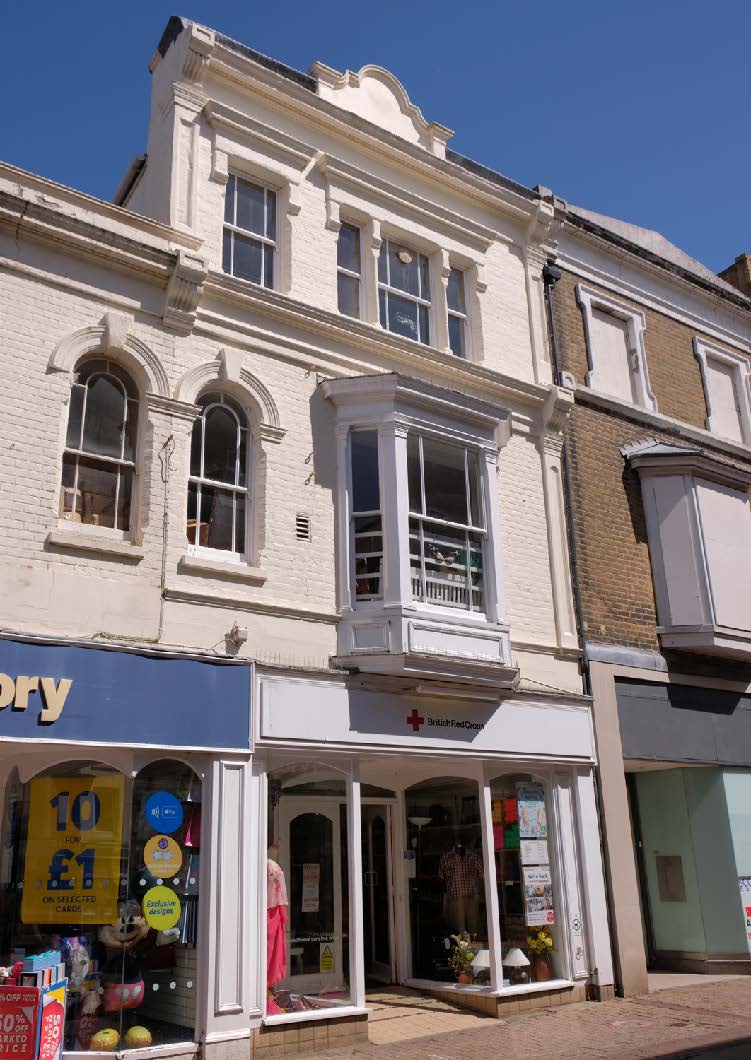4.1.1. Assessing The Building’s Façade
The shopfront is just one part of the building’s facade. Shopfront improvements should be considered within the context of the whole building. A newly refurbished shopfront can fail to make the improvement desired if the upper storeys remain in disrepair. Normally, conserving an upper storey’s original features will be paramount. Where these features are in poor condition, they should be repaired or restored referencing the original design wherever possible.
If features have already been lost, then they can either be replaced on a like for like basis, or with more modern features that are sympathetic to the building’s character. Generally, where listed building consent or planning permission are required it is best to restore the architectural and historic interest of the building if possible. Some common issues and solutions relating to the upper storeys of high street buildings are listed below:
Windows
Windows and the quality of the frames and glazing can make a huge difference to the overall appearance of the building frontage. Decaying historic windows should be repaired where possible or replaced like for like if beyond repair. Opportunities should be taken to replace non-historic poorly proportioned windows with new windows matching the proportions of the original windows as closely as possible. If there is no evidence available showing the building’s original windows, seek further guidance or refer to other buildings of a similar age or appearance to use as a guide.
Maintenance
Maintenance. The walling material (brick or render) and rainwater goods (gutters and downpipes) should be cleaned and maintained regularly to minimise decay and water ingress.
External Fixings
External Fixings other than those of the historic shopfront (such as brackets for canopies) should be avoided as much as possible to preserve the walls’ texture and the building’s appearance. Security devices should be concealed or located sensitively. Other non-essential fixings should be avoided on the building frontage. All redundant fixings should be removed, and masonry repaired to improve the appearance of the building and avoid unnecessary decay and damage.
Paintwork
 Shopfront improvements should be considered within the context of the whole building.
Shopfront improvements should be considered within the context of the whole building.
Paintwork needs to be properly maintained in an appropriate colour. Shopfronts are traditionally dark colours, often just black, as is other external joinery, such as bargeboards. In fact, historically dark colours were used for all external joinery such as window frames. This began to change from the 1860s, when white became more common, although many darker windows could still be seen in the 1940s. Dark green was favoured as it resembled verdigris bronze, reflecting the bronze window frames of the richest. There can therefore be a case for painting the window frames of any building built before 1860s a dark green, or another dark colour. Historic building frontages in both Newport and Ryde have often been painted a bright white on the upper storeys in recent years. Creams and neutral tones should be chosen. Light pastel colours may be appropriate on some frontages but dark paintwork on the upper storeys should be avoided where there is no evidence to suggest that this was part of the historic design.





